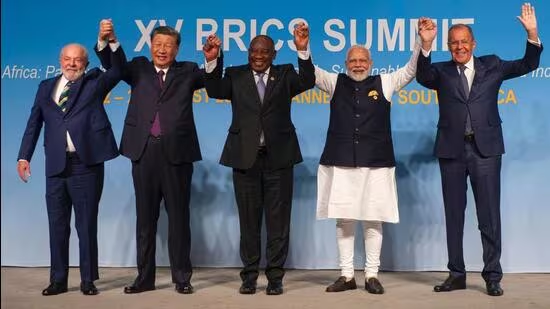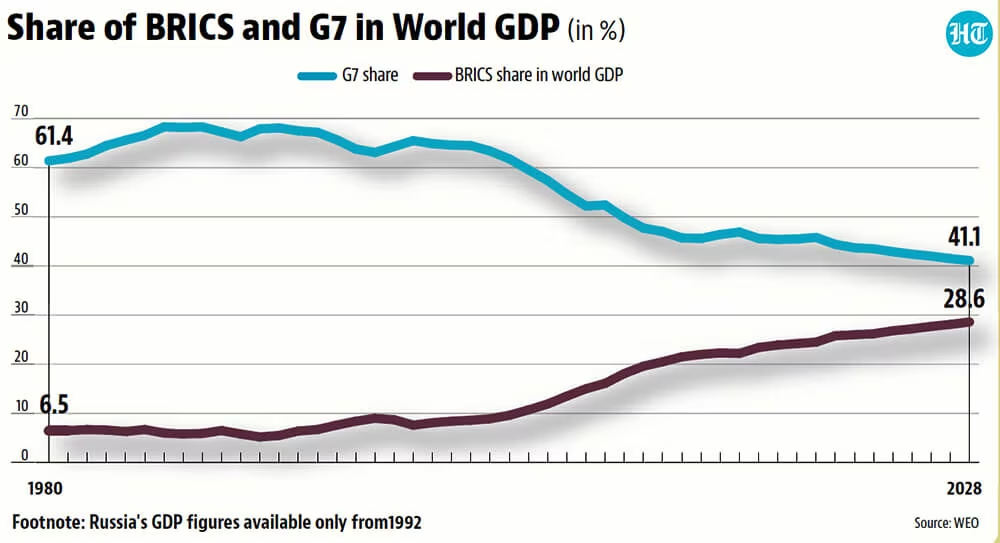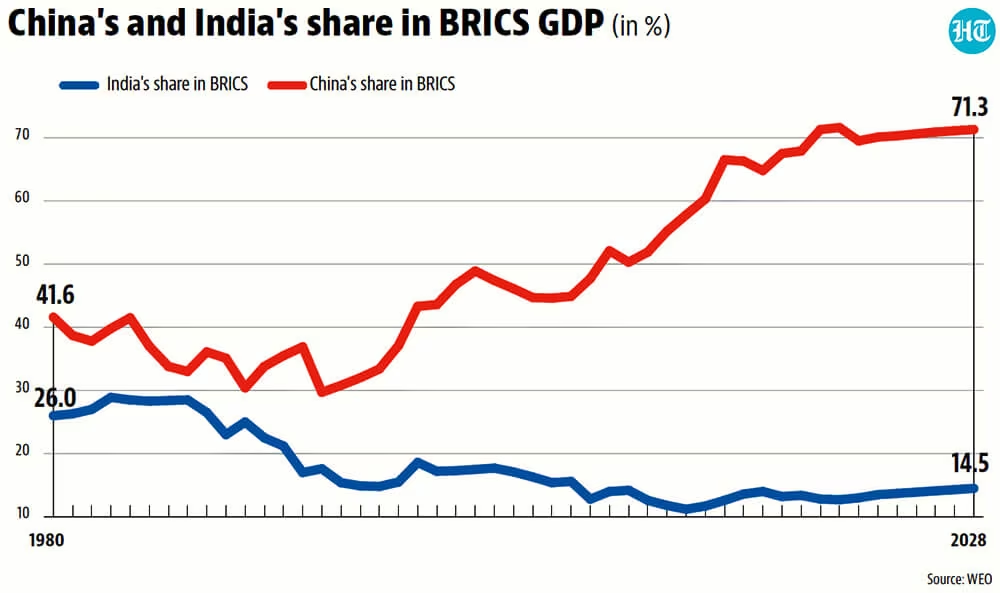Number Theory: Understanding the past, present and future of Brics
The 2011 Sanya declaration — the first at a Brics summit after South Africa joined the BRIC (Brazil-Russia-India-China) grouping — called for “establishing a more equitable and fairer world” while celebrating the fact that “BRICS and other emerging countries have played an important role in boosting global economic growth”. How successful has the grouping been in achieving this objective? And what will be its contribution to global economic growth in the future? While one must wait for the joint declaration by the 15th Brics summit — it ends on August 24 — it is useful to look at some key statistics to answer this question. 

Which also means that Brics is an important driver of global growth
Another way to look at the economic importance of Brics in the global economy is to look at its contribution to global growth. This number was 12.8% between 1990 and 2000, increased to 28.5% between 2000 and 2010; and was 41.6% between 2010 and 2022.

To be sure, China is the biggest contributor to Brics’s economic weight
China accounted for 42% of the Brics nations’ total GDP in 1980. This number reduced to 30% in 1990 but increased to 44% and 70% by 2000 and 2022. By 2028, the latest year for which projections are available in the WEO database, China’s GDP share within Brics is expected to be 71%. India’s GDP share in Brics was 13% in 2022 and expected to reach 14.5% by 2028.

The geopolitical context around Brics is very different compared to when it was formed


Disclaimer: The copyright of this article belongs to the original author. Reposting this article is solely for the purpose of information dissemination and does not constitute any investment advice. If there is any infringement, please contact us immediately. We will make corrections or deletions as necessary. Thank you.
Title:Number Theory: Understanding the past, present and future of Brics
Url:https://www.investsfocus.com









